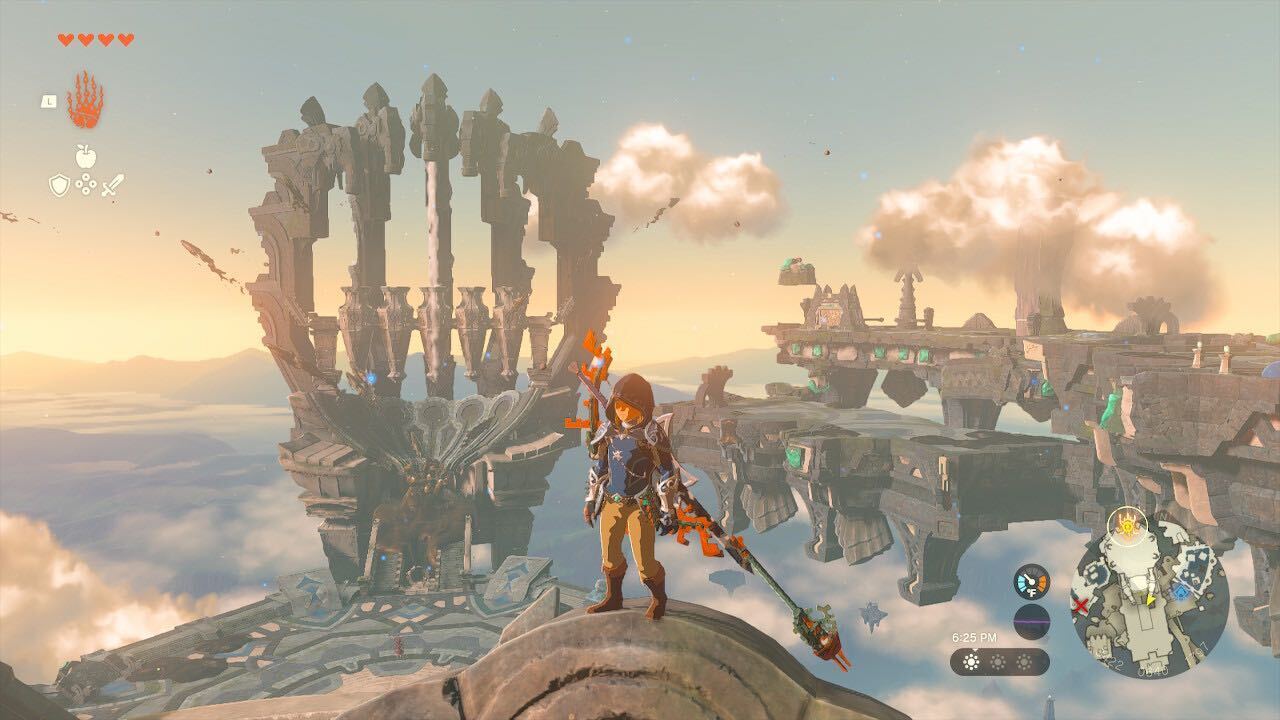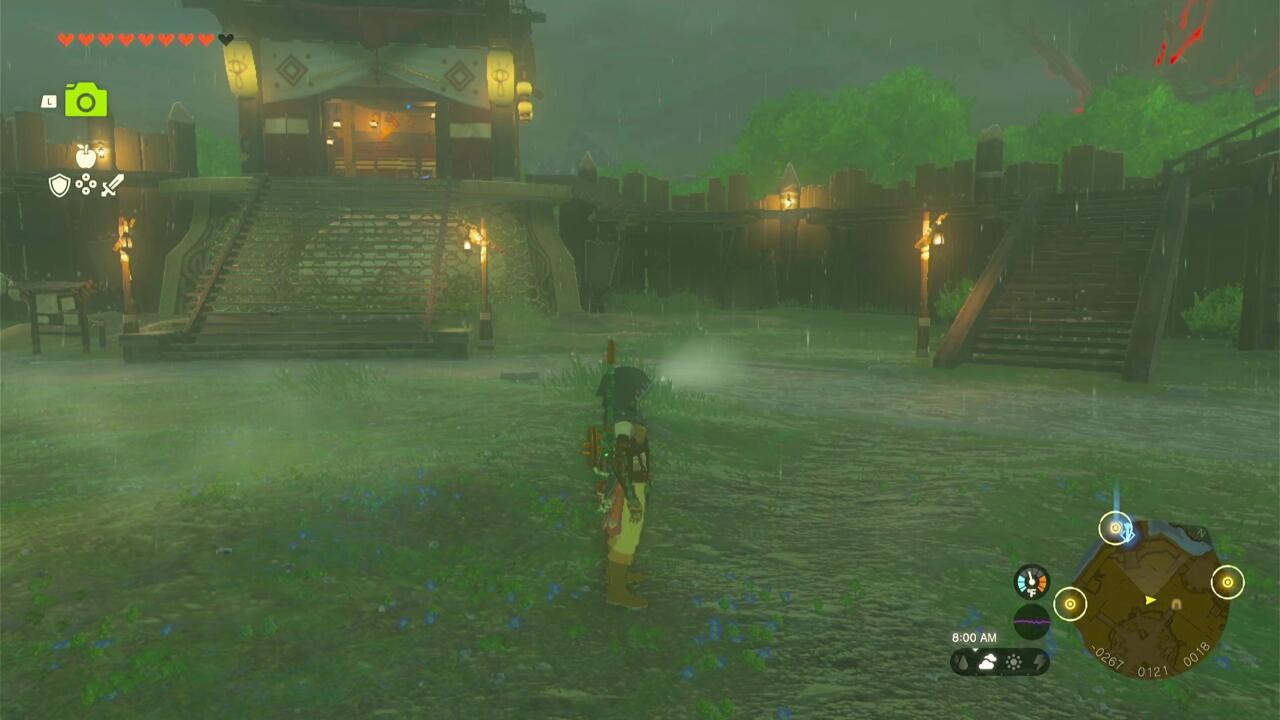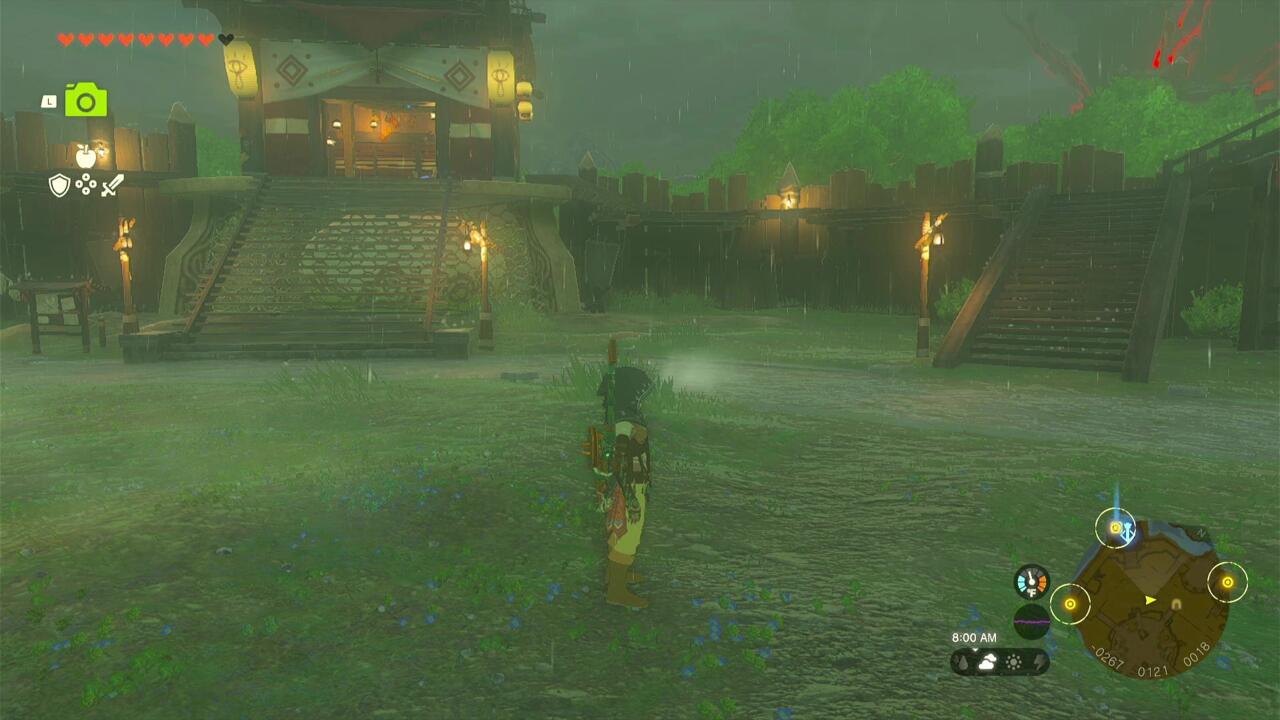Switch 2, Switch Pro, or whatever it ends up being called--it seems like every time a rumor stirs talks about new Nintendo hardware, or a conversation about visuals and performance in a Switch game comes up, we turn our eyes to the need for a new or upgraded console-handheld with beefier specs than that of the Switch. We know it's not coming anytime soon, though. Despite the grumblings about Switch performance, we're still seeing games make the most of the aging tech. And hot on the heels of a generational great on a six year-old system, The Legend of Zelda: Tears of the Kingdom is a technical marvel.
Tears of the Kingdom isn't exactly playing in the same ballpark as the more robust, graphically demanding games on other platforms. It also only needs to run 720p in handheld mode and shoot for 1080p while docked. However, it's able to achieve a relatively striking visual experience by leveraging a distinct art style and creating an unmistakable atmosphere that plays into the series' strengths. More importantly, its sprawling and dense open world now incorporates the exploration of islands in the sky and a massive underground system the size of the surface itself, all without demanding state-of-the-art hardware. So if you thought Breath of the Wild was big, well, Tears of the Kingdom is on a whole 'nother level.
The key is it comes together through seamless exploration and relative consistency of its technical performance. You can dive from a sky island, look out into the entirety of Hyrule, then drop straight through a chasm into the depths--having tested that myself, there wasn't a hitch and maintained the target frame rate throughout. Graphical "tricks" and techniques make this possible, of course, as not everything in the distance is always rendered in complete detail and dynamic resolution helps lighten the load while masking moments of lower image quality. Regardless, I'm often just impressed that a game of this size and scope even runs on the Switch.

To top it off, there's a layer of polish that has offered an experience free of bugs amid the wild physics simulation and complex, freeform gameplay systems all having to work in harmony. You would think with the multifaceted sandbox, made possible by Ultrahand and our miraculous feats of makeshift engineering, that the game would break down at some point. But the only mishaps thus far have been of our own doing, accidentally burning down works of art we put time and effort into.
However, as noted in our The Legend of Zelda: Tears of the Kingdom review by my colleague Steve Watts, frame rate drops do occur, hampering the experience at times. I've run into some noticeable dips in frame rate, particularly when activating the Ultrahand ability while navigating dense environments or in combat scenarios that get busy with tons of explosions and particle effects. Those are the few instances in which I experienced performance problems.
The folks at Digital Foundry found in their technical analysis that Tears of the Kingdom largely runs at a consistent 30fps, aside from the aforementioned moments causing noticeable hitches. Now, 30fps isn't blowing the doors off, but the key here is consistency, because nothing is more jarring than playing a game that keeps bouncing between high and low frame rates, like riding in a car constantly accelerating and braking. They also did their analysis in comparison to Breath of the Wild, which was impressive at its time, and it appears that Tears of the Kingdom has improved in small, but meaningful ways from a technical perspective, even with the expansion in overall scale.
There's no denying that some Switch exclusives struggle on the hardware, namely Pokemon Scarlet and Violet (and Bayonetta 3 to a lesser extent) in recent memory. The former's poor technical performance and low-quality visuals seemingly stem from issues not entirely related to hardware. Seeing as how Breath of the Wild (a Switch launch game that also ran on Wii U) and now Tears of the Kingdom are also massive open worlds, technical shortcomings are less about the platform's capabilities and more about performance optimizations in the development process.
It's also worth noting that developer Monolith Soft assisted with the development of Tears of the Kingdom. Given the team's track record with the Xenoblade Chronicles series--most recently with Xenoblade Chronicles 3 from 2022--the work in juicing the Switch for all it's worth is perhaps not surprising, but stunning nonetheless. Monolith Soft's forte has been building expansive worlds with a sense of scale and using effects that aren't overly taxing on hardware, but are visually convincing in creating the game's atmosphere. It's probably unfair to ask that of every single game, but having recently played through the 2022 ports of Persona 5 Royal and Nier Automata on Switch, it shows that games of that style can still look and run smoothly and not feel like they're making major compromises.
The Steam Deck has been a revelation by bringing PC gaming to handheld form with the power necessary to run many modern games in playable states. Asus revealed that its handheld gaming PC, the ROG Ally, will hit shelves soon and outperform the Steam Deck by a considerable margin, at least on paper. So the expectation for more-advanced handheld gaming has certainly changed in recent years. Yet, the Switch continues to feature the more noteworthy technical feats by stretching a six-year-old system to its absolute limits without melting the system in the process.
Don't get it twisted: I would be one of the first in line for a more powerful Switch, especially if a handful of current high-profile games either look or run better. A stronger Nintendo console is long overdue, and there is precedent for an interstitial upgrade, as we saw with the 3DS. As I look out to the horizon in Xenoblade Chronicles 3 or drop into Hyrule from the sky in Tears of the Kingdom, I can't help but think about what these games could look like in higher resolution with a greater level of detail and maybe higher frame rates. But I don't think it's mutually exclusive to be impressed that we have games of this caliber on the ol' Switch with a level of polish that seems less common today.



